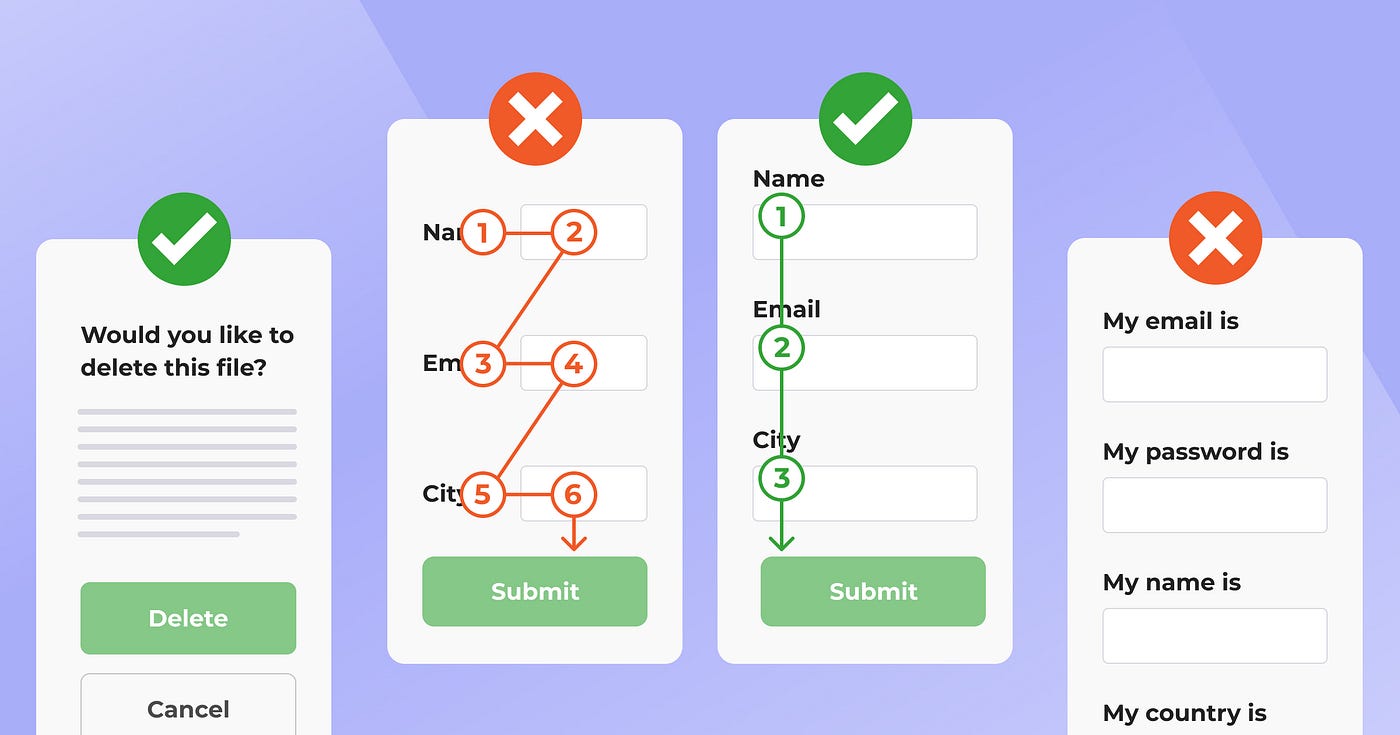
User-friendly design makes our digital lives easier. But what exactly does it mean? User-friendly design refers to creating products that are easy to use, intuitive, and accessible to everyone. Imagine navigating a website without frustration or using an app that feels like second nature. That's the magic of good design. It’s not just about looks; it’s about function and experience. From clear navigation to responsive layouts, every detail matters. Whether you’re a designer, developer, or just curious, understanding these principles can transform how you interact with technology. Ready to dive into the world of user-friendly design? Let’s explore 37 fascinating facts that will change how you see everyday digital tools.
Key Takeaways:
- User-friendly design focuses on making products easy to use and understand. It prioritizes the needs of users, ensuring they can achieve their goals efficiently. This includes intuitive navigation, clear instructions, and accessibility features for people with disabilities.
- Testing with real users is essential to create user-friendly designs. Techniques like usability testing, A/B testing, and surveys help identify problems and improve the overall user experience. This ensures that products are engaging, efficient, and accessible to a wide audience.
What is User-Friendly Design?
User-friendly design makes products easy to use and understand. It focuses on the needs of users, ensuring they can achieve their goals efficiently. Here are some interesting facts about user-friendly design.
-
User-Centered Approach: User-friendly design prioritizes the user's needs and preferences. Designers often conduct surveys and interviews to understand what users want.
-
Intuitive Navigation: Good design ensures users can find what they need without confusion. Menus and buttons are placed logically.
-
Consistency: Consistent design elements, like fonts and colors, help users feel comfortable. They know what to expect on each page.
-
Accessibility: User-friendly design includes features for people with disabilities. This might mean larger text, voice commands, or alternative text for images.
-
Feedback: Users receive immediate feedback from the system. For example, a loading icon shows that a page is still loading.
-
Error Prevention: Good design helps prevent mistakes. For example, a confirmation message before deleting a file.
-
Aesthetics: Attractive designs are more engaging. A clean, visually appealing interface can make a big difference.
-
Mobile-Friendly: With many users on mobile devices, responsive design is crucial. Websites should work well on all screen sizes.
-
Speed: Fast-loading pages improve user experience. Users are likely to leave if a page takes too long to load.
-
Clear Instructions: Instructions should be easy to understand. Simple language and clear steps help users complete tasks.
Importance of User Testing
Testing with real users is essential to create a user-friendly design. It helps identify problems and areas for improvement.
-
Usability Testing: Real users test the product to find issues. This helps designers make necessary changes.
-
A/B Testing: Two versions of a design are compared to see which performs better. This helps in choosing the best option.
-
Heatmaps: These show where users click most on a page. Designers use this data to improve navigation.
-
Surveys: User feedback through surveys provides valuable insights. It helps understand user satisfaction and areas needing improvement.
-
Focus Groups: Small groups of users discuss their experiences. This provides in-depth feedback on the design.
-
Beta Testing: Early versions of a product are released to a limited audience. This helps catch issues before a full launch.
-
Task Analysis: Observing users as they complete tasks reveals pain points. Designers can then simplify these tasks.
-
Eye Tracking: This technology shows where users look on a page. It helps in placing important elements where they are easily seen.
-
User Personas: Creating fictional characters based on user data helps in designing for specific needs. This ensures the design meets diverse user requirements.
-
Card Sorting: Users organize information into categories. This helps in creating intuitive navigation structures.
Tools and Techniques for User-Friendly Design
Various tools and techniques assist designers in creating user-friendly products. These tools streamline the design process and ensure high-quality results.
-
Wireframing: Wireframes are basic layouts of a design. They help plan the structure before adding details.
-
Prototyping: Prototypes are interactive models of a design. They allow for testing and feedback before final development.
-
Sketching: Quick sketches help brainstorm ideas. They are a low-cost way to explore different design concepts.
-
Mockups: High-fidelity mockups show what the final product will look like. They include colors, fonts, and images.
-
User Flows: Diagrams that show the steps a user takes to complete a task. They help identify and remove unnecessary steps.
-
Style Guides: Documents that outline design standards. They ensure consistency across all parts of a product.
-
Design Systems: Collections of reusable components and guidelines. They speed up the design process and maintain consistency.
-
Persona Development: Creating detailed profiles of target users. This helps in designing for specific needs and preferences.
-
Journey Mapping: Visualizing the user's experience from start to finish. This helps identify pain points and opportunities for improvement.
-
Responsive Design: Techniques that ensure a product works well on all devices. This includes flexible layouts and scalable images.
Benefits of User-Friendly Design
User-friendly design offers numerous benefits for both users and businesses. It enhances satisfaction, efficiency, and overall success.
-
Increased Satisfaction: Users are happier when they can easily use a product. This leads to positive reviews and recommendations.
-
Higher Engagement: Engaging designs keep users interested. They are more likely to spend time on a well-designed product.
-
Reduced Support Costs: Fewer user issues mean less need for customer support. This saves time and money for businesses.
-
Better Conversion Rates: Easy-to-use designs lead to higher sales and sign-ups. Users are more likely to complete desired actions.
-
Improved Accessibility: Inclusive designs reach a wider audience. This includes people with disabilities and different device preferences.
-
Brand Loyalty: Positive experiences build trust and loyalty. Users are more likely to return to a brand they find easy to use.
-
Competitive Advantage: User-friendly designs stand out in the market. They attract and retain more users compared to poorly designed products.
Final Thoughts on User-Friendly Design
User-friendly design isn't just about making things look good. It's about creating experiences that are intuitive and enjoyable. When websites or apps are easy to navigate, users are more likely to stick around. This means more engagement and better results for businesses.
Remember, simplicity is key. Overloading a page with too much information or too many features can overwhelm users. Instead, focus on clear, concise content and straightforward navigation.
Also, don't forget the importance of feedback. Listening to users and making adjustments based on their experiences can lead to continuous improvement.
In the end, a user-friendly design benefits everyone. Users get a better experience, and businesses see better engagement. So, keep these facts in mind and strive for designs that are both functional and delightful.
Frequently Asked Questions
Was this page helpful?
Our commitment to delivering trustworthy and engaging content is at the heart of what we do. Each fact on our site is contributed by real users like you, bringing a wealth of diverse insights and information. To ensure the highest standards of accuracy and reliability, our dedicated editors meticulously review each submission. This process guarantees that the facts we share are not only fascinating but also credible. Trust in our commitment to quality and authenticity as you explore and learn with us.


